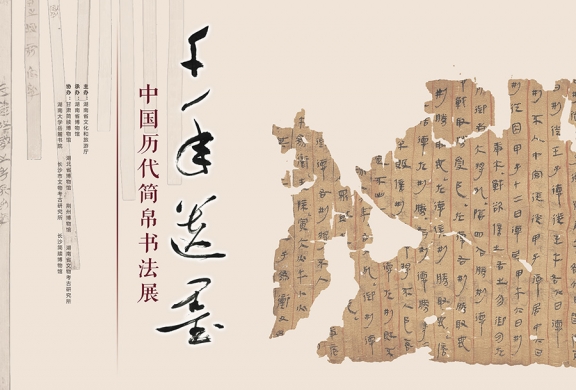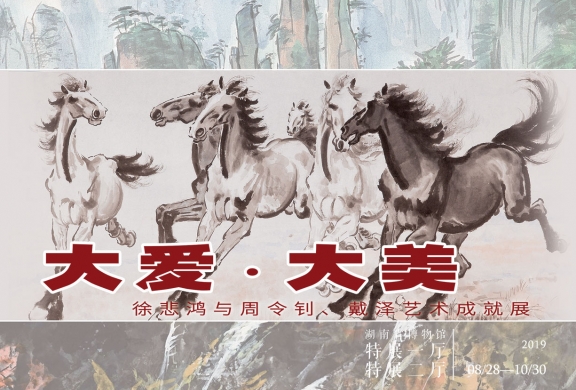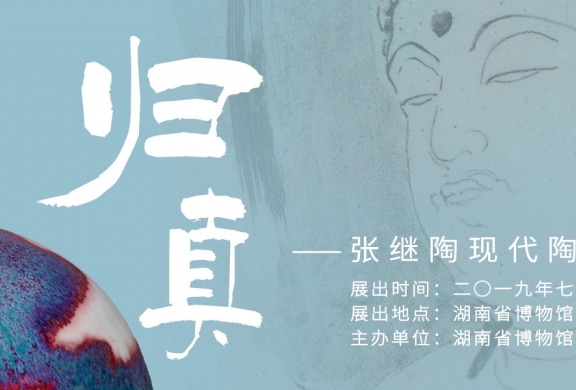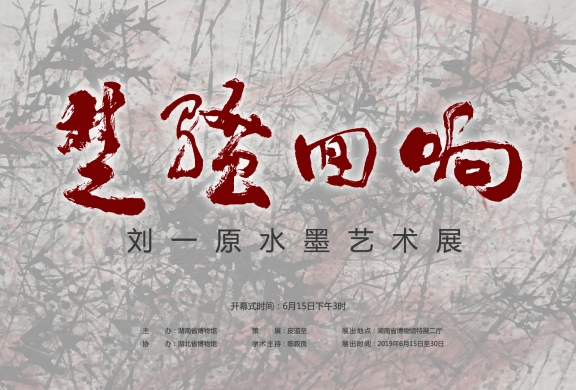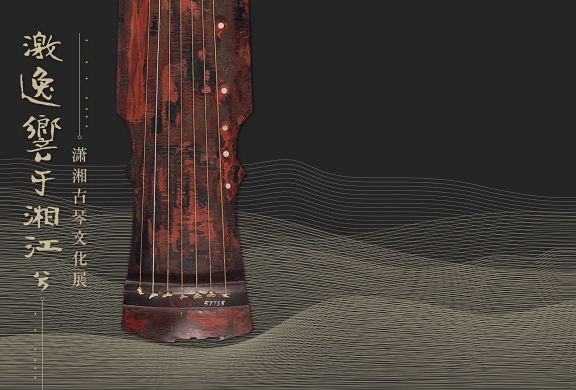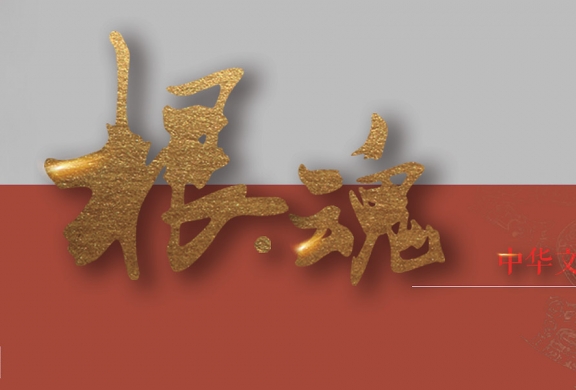Past Exhibitions
Exhibition of the Chinese ancient calligraphy on bamboo slips and silkNo.2 Special Exhibition Hall,1F 2019.11.10 - 2019.11.30 To write on bamboo slips and silk is new and strange to us today. Our encounter with the calligraphy on bamboo slips and silk began with the archaeological discoveries at the beginning of the 20th century while the calligraphy on bamboo slips and silk had been a daily life until the popularization of paper. The unearthed books on bamboo slips and silk were written from the Warring States to Wei and Jin dynasties, spanning for nearly a thousand years. Later on, the inscriptions on bronzes and tablets were used by ancient Chinese calligraphy learners as models instead of the calligraphy works on bamboos and silk because these early bamboo and silk works have been lost in history. In the Qing dynasty, "epigraphy" was incorporated into the aesthetic system of calligraphy. It exerted profound influence on contemporary calligraphy learners in aspects from aesthetic taste to the model selection. Now faced with a large number of diverse calligraphy works on bamboos and silk, we have noticed the possibility of rewriting the history of Chinese calligraphy. These works recorded the factors affecting the writing effect including the calligrapher’s writing habits and strokes, aesthetic taste of different times, customs of different regions, different writing tools and styles. It is difficult to use the existing theoretical system of calligraphy to interpret the complexity of font evolution and the characteristics of the times in the layout in silk calligraphy, so only when we abandon the traditional cognition and immerse ourselves in these works can we feel the beauty of them. This exhibition aims to restore the diversity and richness of the calligraphy on bamboos and silk as much as possible, outline its development process from the Warring States to the Wei and Jin dynasties, and inspire new thoughts on Chinese calligraphy. |
Exhibition of Artworks by Xu Beihong, Zhou Lingzhao and Dai ZeNo.1 and No.2 Special Exhibition Hall,1F 2019.08.28 - 2019.10.30 Xu Beihong, the first President of China Central Academy of Fine Arts(CAFA), is a master of modern painting and art and alsoan art educator. Zhou Lingzhao and Dai Ze were both invited by Xu Beihong to teach at the CAFA, and they both adhere to the direction of art education and creation initiated by Xu Beihong. As pioneers of Chinese art in the 20th century and the founders of Chinese modern art education, the three artists have made historic contributions to the establishment of the Chinese modern art education system. |
Reditus & Veritas –Exhibition of Modern Ceramics by Zhang JitaoNo.1 Special Exhibition Hall,1F 2019.07.10 - 2019.08.08 Zhang Jitao, born in 1931 in Changsha, Hunan, currently resides in Taiwan. After moving to Taiwan in 1949, he attended and graduated from Military Technical School and Military Foreign Languages School. In 1976, he learnt under the famous Taiwanese ceramicist Mr. Lin Baojia and from then on has been devoting his body and soul into ceramic creations. Zhang has always followed his master's ideology of "Ceramics Living Arts"; his artworks fused both the past and the present, connecting beauty and functionality, most of his works are based on Chinese traditional containers, which he then integrates with modern ceramics' design and functionality, along with glazes of his personal style. This clearly portrays the meaning of ceramics living: A fuse of innovation and aesthetics. In November, 2014, Mr. Zhang Jitao donated 75 sets (99 pieces of artwork) of the most iconic works in his ceramics career to the Hunan Museum. Within the collection, there are ceramic plates that cleverly combine calligraphy with paintings, vivid and lively animal ceramic sculptures and colorful glazed ceramics. These works condense Mr. Zhang' s perception of life, carrying his many years of creative passion and filled with a rich philosophy of life. This exhibition is truly a cultural feast of modern ceramics. |
Echoes of Lisao——Exhibition of Ink Paintings by Liu YiyuanNo.2 Special Exhibition Hall,1F 2019.06.15 - 2019.06.30 Liu Yiyuan’ creation of modern ink painting began in the 1980s. For the past half a century, he has been creating ink paintings with the keywords of “heart image” (心象), ”dots and lines” (点线) and “feelings of the changes” (感时), providing a profound narrative of the ink arts in the field of Chinese arts. Based on the local life experience, he confronts the present world with a perceived and reflective attitude, taking the advantages of ink arts theories in Chinese traditional painting such as “aesthetic experience with peace of mind” (澄怀味道) and “expressing Taoism by shape” (以形媚道). From the 1980s to the beginning of this century, his works adopted the traditional painting techniques of “creating a circumstance in the mind" (因心造境) and “expressing one’s heart by the brush in hand”(以手运心) since Song and Yuan Dynasty, giving full play to the expression quality of the ink painting. Hence, a sense of compassion for all mankind was integrated into the images and paintings to express multiple understandings about human’s life after “modernity”, which arouses wide resonance. His works has been studied by theorist and critics who focus on the contemporary transformation of Chinese culture. Critics have been revealing the sense of history, reality and characteristics of his creation methodology in his works from different perspectives, which provides fresh starts for the practice of Chinese contemporary ink art. Themed on the “Echoes of Lisao”, this exhibition aims to demonstrate the spiritual elevation of Liu Yiyuan’s art creation as well as the subtle changes of his artistic language during the past decade. The exhibition showcased 35 of his works, among which 25 were created after 2005. In these works, he reoriented his exploration and research on the traditional culture from the Song and Yuan paintings to the more ancient Chu culture that dates back more than 2000 years ago. The sense of compassion in his early works turned into a pursue to poetic nature and connotation, which was related with the traditional Li Sao and its rhyme. It’s not only a modern practice of “landscape expressing Taoism by its shape” (ZongBing), but also a spiritual transcendence and sublimation. The selected works in this exhibition echo with the Chu art in its advocation of life, movement and vitality as well as the artistic spirit of yearning for freedom. For example, strong color contrasts in “Reborn” and “Sound of the Chu Hero” express the spiritual pursuits; flowing lines in “Reminiscence of the Miluo River”, “the Milky Way”, and “the Trace of Time” bear poetic connotations. Hunan and Hubei are the birthplace of Chu culture and therefore boast strong tradition of Chu culture and abundant resources of Chu art. It is highly expected that this exhibition in Hunan Museum can promote our imaginative robust and mettlesome ethos, encourage the creation of modern and contemporary local art in China and exert its positive effect on culture development. |
Exhibition of Guqin Culture in HunanThemed Exhibition Hall, 3F 2019.05.18 - 2022.09.30 Guqin originally known as qin, also called a seven-stringed plucked qin and yaoqin, is one of the most ancient instruments of Chinese nation. In ancient times, it was highly praised by literati as the first of the four arts of qin, chess, calligraphy and painting. In November 2003, UNESCO declared it the "representative of oral and intangible heritage of humanity". Hunan is blessed with a long history of guqin. Shun, a chief of ancient Chinese tribal alliance, played the guqin, intoning “Nanfeng” to rein the country. Guo Mian, a musician in the Southern Song Dynasty, once moved to Hengshan Mountain and composed a song named “Mist and Clouds over Xiao-Xiang River”, which was admired by people for thousands of years. Sages as Zhu Xi, Zhang Shi, Wang Fuzhi and Zuo Zongtang spread feudal code of ethics and purified their souls by qin, adding profound cultural connotation to guqin culture in Hunna. Modern musicians, such as Peng Zhiqing, Yang Zongji, Gu Meigeng, Zha Fuxi and Li Jing were all engaged in guqin study in Hunan, which had a great impact in this field. Hunan Museum has a collection of fifty-three pieces of guqin, which were unearthed or manufactured during the time from Western Han Dynasty to Republic of China, spanning more than two thousand years. These rich heritages are undoubtedly an important part of Chinese guqin culture. “Those who play the guqin by the Xiangjiang River have good moral standards as ancient sages.” In the moonlight of Lushan Mountain and the ripple of Xiangjiang river, guqin melody is in harmony with the heaven and the earth, echoing with the universe. It is hoped that the exhibition can provide an opportunity for people from all walks of life to understand the culture of Xiaoxiang guqin and appreciate its unique charm. |
Root and Soul - Exhibition of Chinese CivilizationNo.1Special Exhibition Hall, 1F 2019.05.18 - 2019.07.18 Chinese civilization, profound and long-lasting, has been recognized by people all over the world. This fact is even further solidified by the boundless artifacts uncovered. Although only 30 sets of exhibits are shown in this exhibition and its selection process was constrained by many obstacles, we still have a chance to catch a glimpse of this magnificent Chinese civilization. The development of Chinese civilization has been multi-dimensional and full of twists and turns, rather than going down a narrow path. the artifacts will be restored to its former glory as we will attempt to place it back in its own timeline. We will also seek out the artifacts’ values and positions within the society by conducting an extensive study into their origin, design and background, thus shining a light on the beauty of the civilization. The Chinese civilization is the only civilization that is still alive and going strong. Although it lies on the Eastern pole of the Eurasian continent, blocked by an immense ocean, high mountains and an endless desert, China has never closed its door to other civilizations. There were exchanges and integrations between grassland culture and farming culture in its north and south; communication and interactions with cultures from ancient Egypt, Greece, Rome, Persia and Arab in the East and the West. In addition, There had also been an influx of colorful religions, such as Buddhism, Zoroastrianism, Nestorianism and Islam. some of foreign cultures have either faded away or assimilated into Chinese civilization. Through constant communication, trade and interaction, civilizations collide, innovate and renew. The exhibits here are witnesses of the cultural exchanges between China and the west. History and reality are inseparable, even more so with civilizations that develops from a natural, primitive state. These artifacts may seem to have no connection with the current China. Actually, it is inextricably tied up with our modern life. It affects our way of thinking and many other aspects. It is in our blood. It is the “root” and “soul” of our culture. “Even now, it is the powerful spiritual strength that promotes reform, opening-up and the socialist modernization movement”.
|

